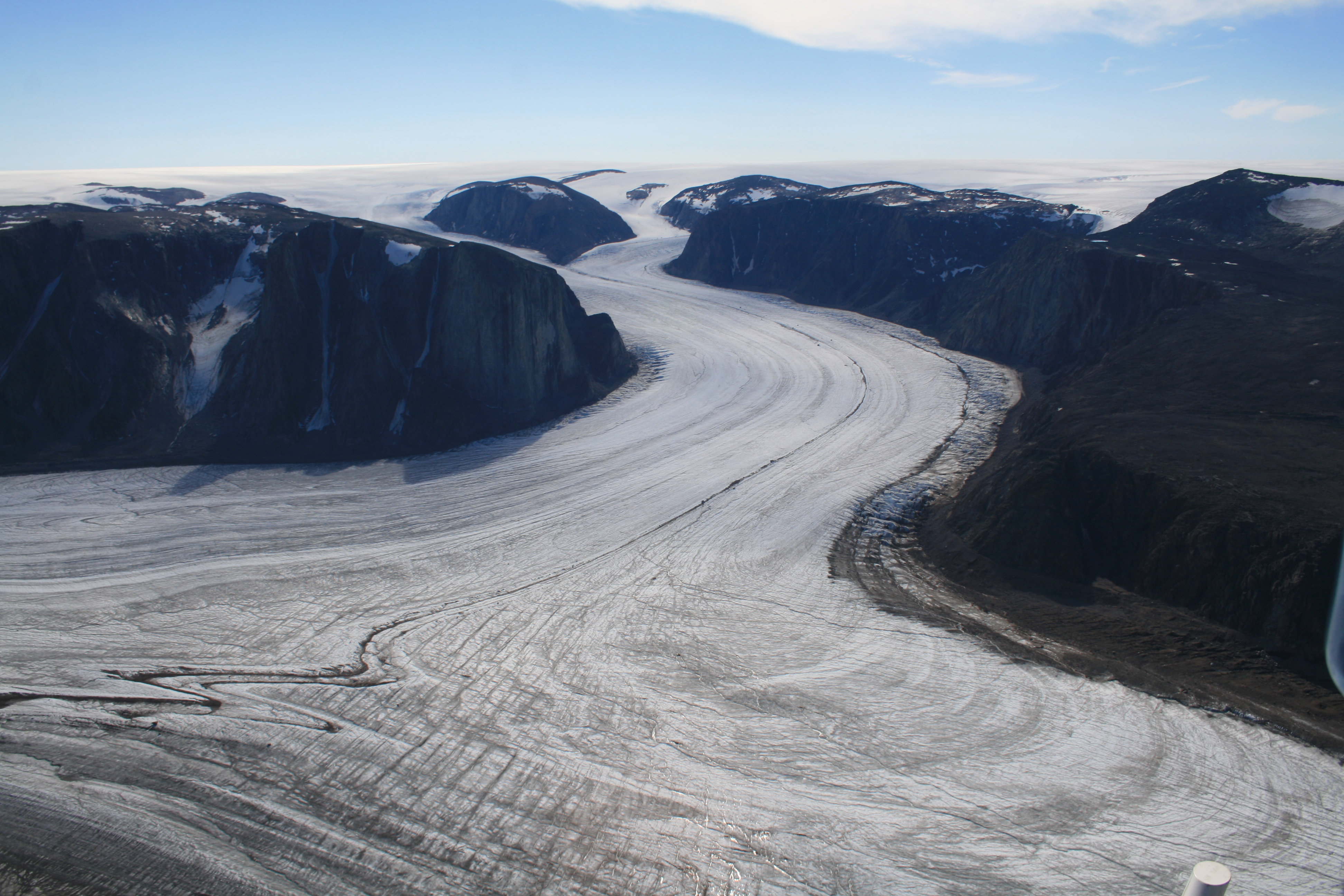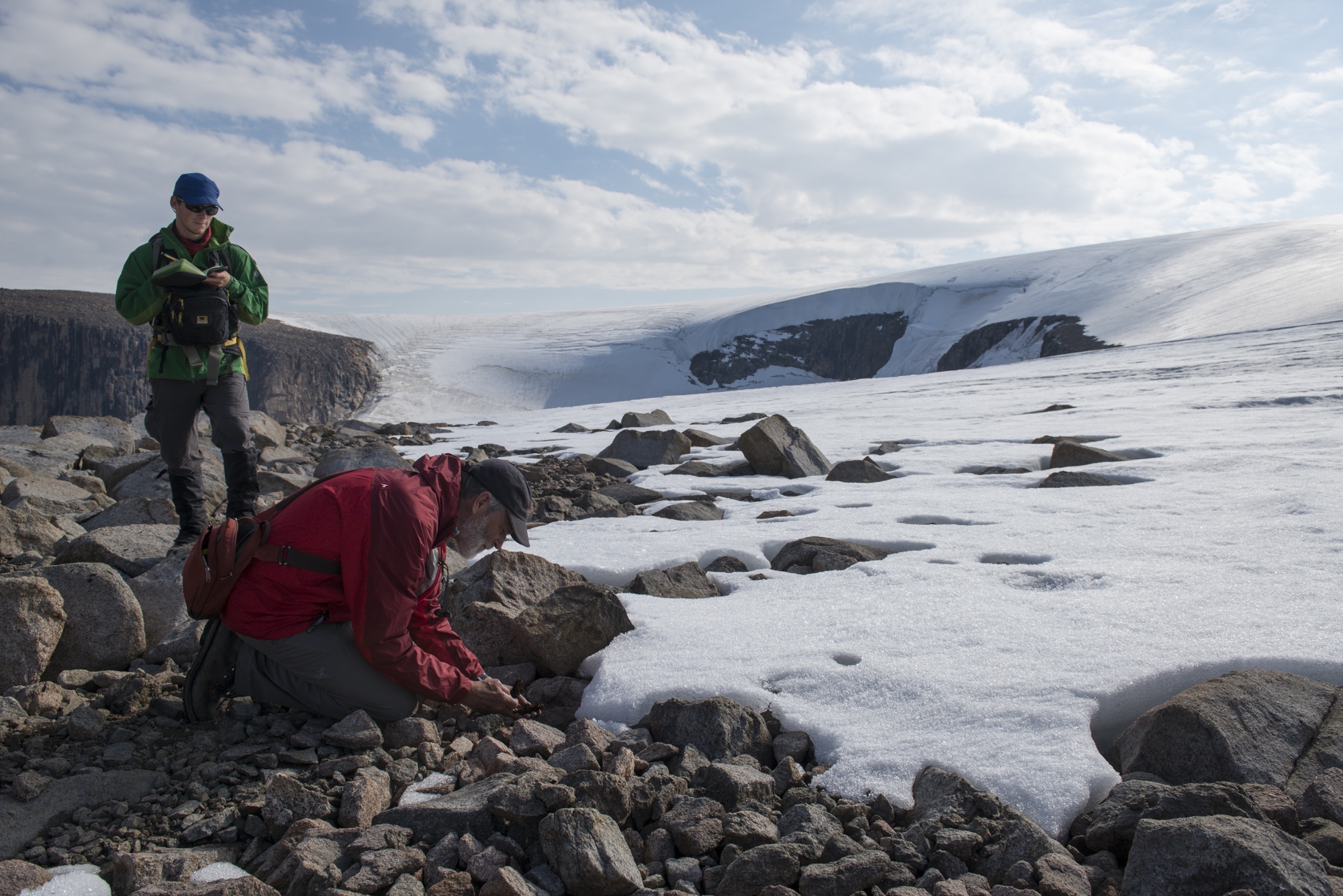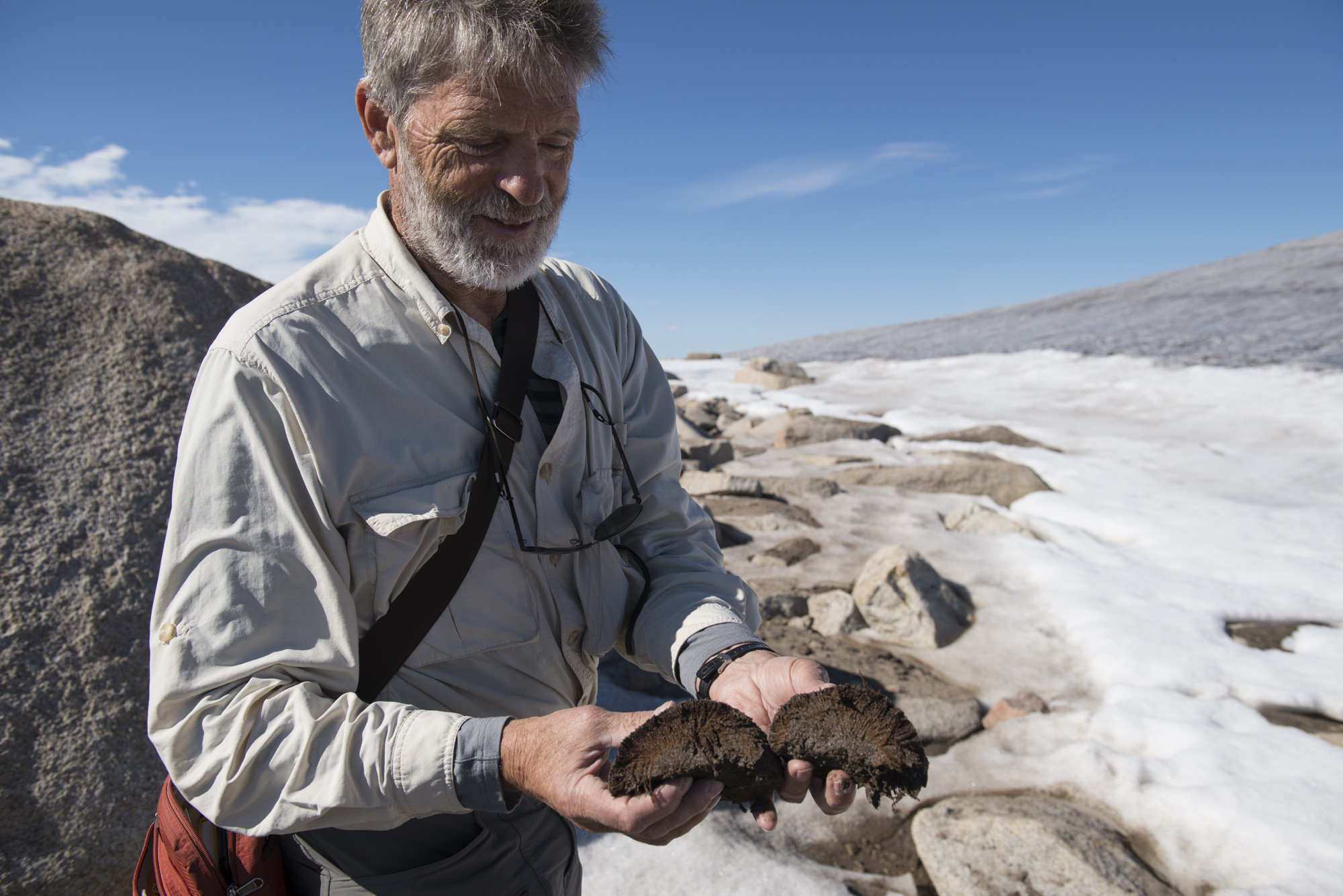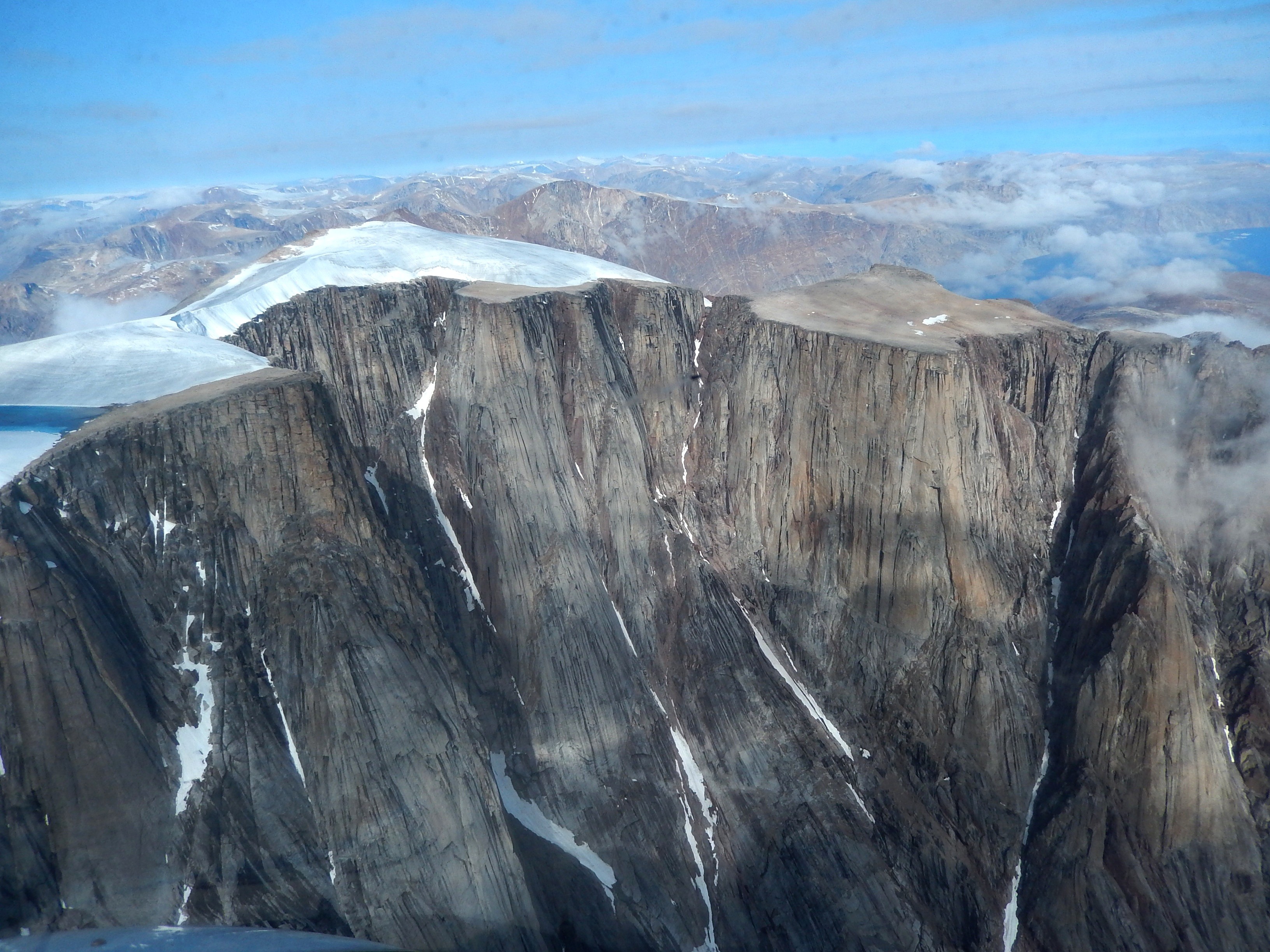Climate Change Is Revealing Arctic Landscapes Not Seen For 40,000 Years
Ancient landscapes long frozen under ice are being exposed by climate change in the Canadian Arctic.
On Baffin Island, part of the Canadian territory of Nunavut, melting glaciers have revealed plant life that's been trapped under ice for 40,000 years, according to a new study published to Nature Communications on Friday.
Forty-thousand years ago was "right in the middle of the last glacial period, when temperatures, on average, were significantly colder than today," Simon Pendleton, lead author of the study and a climate scientist at the University of Colorado Boulder, told Motherboard in an email.
 Glaciers and ice caps on Baffin Island in the Canadian Arctic. Photo: Simon Pendleton/University of Colorado Boulder/INSTAAR
Glaciers and ice caps on Baffin Island in the Canadian Arctic. Photo: Simon Pendleton/University of Colorado Boulder/INSTAAR The researchers' findings indicate that summer warmth in the region over the past century exceeded that of any century in the last 115,000 years.
Pendleton and a team of fellow climate scientists thought of Baffin Island as a canary in a coal mine, according to an interview with National Geographic. Glaciers are sensitive to climate change and their predictable behavior "makes them one of the most reliable proxies for changes in summer temperature," Gifford Miller, one of the paper's authors and a climate scientist at the University of Colorado Boulder, said in a statement.
At the beginning of the last ice age, the island's glaciers encompassed the landscapes beneath them. Mosses and other plants were entombed in ice, becoming frozen in time.
Knowing this, Pendleton and his team collected 48 plant samples from the ground-remarkably preserved-near the edges of 30 glaciers on Baffin Island. In the lab, they used radiocarbon dating to estimate "death dates" for the plants, measuring the amounts of naturally occurring isotopes that decayed at certain rates over time.
What they found was that all had died at least 40,000 years ago. (The radiocarbon dating method is only precise up to 40,000 years.) Pendleton explained that plants previously buried under ice "are efficiently removed from the landscape after exposure," so it's unlikely glaciers had melted and reformed over the dead flora between then and now. As such, the radiocarbon ages suggest these landscapes have been continuously ice-covered for at least 40,000 years.
 Simon Pendleton and Gifford Miller collecting ancient plants preserved beneath an ice cap on Baffin Island, and now being exposed by modern retreat; their radiocarbon ages define their kill-dates and provide a perspective on modern warming. Photo: Matthew Kennedy/Earth Vision Institute
Simon Pendleton and Gifford Miller collecting ancient plants preserved beneath an ice cap on Baffin Island, and now being exposed by modern retreat; their radiocarbon ages define their kill-dates and provide a perspective on modern warming. Photo: Matthew Kennedy/Earth Vision Institute  Gifford Miller inspects dead moss that will later be radiocarbon dated in the lab. Photo: Matthew Kennedy/Earth Vision Institute
Gifford Miller inspects dead moss that will later be radiocarbon dated in the lab. Photo: Matthew Kennedy/Earth Vision InstituteThe team then looked to temperature data reconstructed from ice cores from Baffin Island and nearby Greenland ice sheet. Paleotemperature models indicated not only that these landscapes had been continuously covered by ice for 40,000 years-until now-but that modern temperatures represent the warmest century in 115,000 years, according to the study.
"Prior to roughly 40,000 years ago, the most recent time when temperatures were close to modern temperatures was during the last interglacial period, around 115,000 years ago," Pendleton said.
"With this context, we then speculate that is is likely that these ancient landscapes now being exposed under modern warming have been continuously ice covered since the last interglacial period around 115,000 years ago," he added.
 Dead moss still in the position of life and collected at the margin of this ice cap was dated by radiocarbon to have died more than 48,000 years ago. Photo: Gifford Miller/University of Colorado Boulder/INSTAAR
Dead moss still in the position of life and collected at the margin of this ice cap was dated by radiocarbon to have died more than 48,000 years ago. Photo: Gifford Miller/University of Colorado Boulder/INSTAAR The last time global surface temperature was this warm, National Geographic explained, it was due to changes in Earth's orbit that affected that amount of solar energy it received. Glacial periods can also be attributed to natural processes.
But today, changes to Earth's climate are overwhelmingly the result of human activity.
The new study adds to previous research that also suggests Earth is now warmer than it's been in millennia. Canada's Arctic region is a hotspot for climate research, where its once-frozen vistas are disappearing at an unprecedented rate.
"Unlike biology, which has spent the past three billion years developing schemes to avoid being impacted by climate change," Miller added, "glaciers have no strategy for survival."